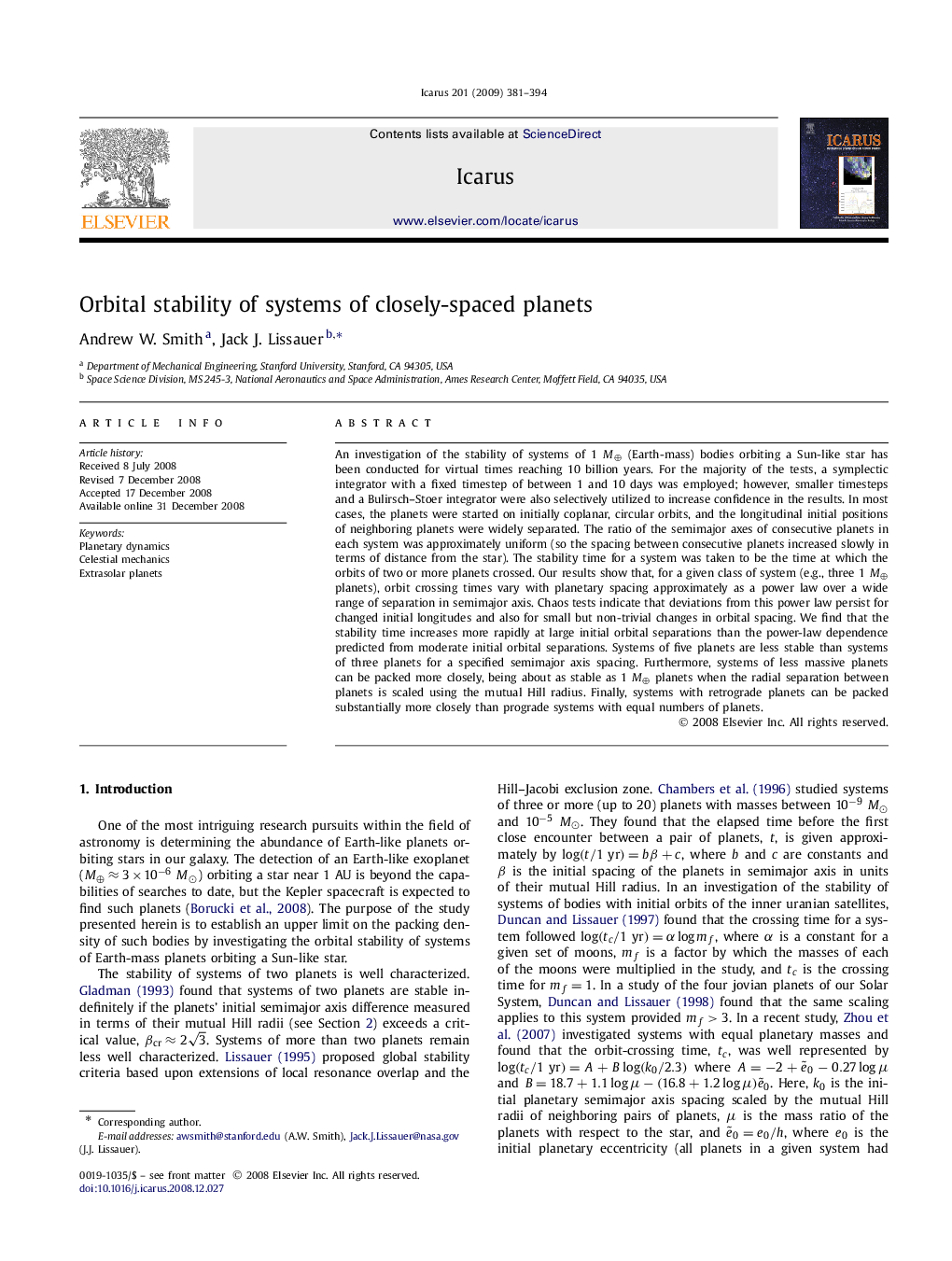| کد مقاله | کد نشریه | سال انتشار | مقاله انگلیسی | نسخه تمام متن |
|---|---|---|---|---|
| 1775343 | 1021190 | 2009 | 14 صفحه PDF | دانلود رایگان |

An investigation of the stability of systems of 1 M⊕M⊕ (Earth-mass) bodies orbiting a Sun-like star has been conducted for virtual times reaching 10 billion years. For the majority of the tests, a symplectic integrator with a fixed timestep of between 1 and 10 days was employed; however, smaller timesteps and a Bulirsch–Stoer integrator were also selectively utilized to increase confidence in the results. In most cases, the planets were started on initially coplanar, circular orbits, and the longitudinal initial positions of neighboring planets were widely separated. The ratio of the semimajor axes of consecutive planets in each system was approximately uniform (so the spacing between consecutive planets increased slowly in terms of distance from the star). The stability time for a system was taken to be the time at which the orbits of two or more planets crossed. Our results show that, for a given class of system (e.g., three 1 M⊕M⊕ planets), orbit crossing times vary with planetary spacing approximately as a power law over a wide range of separation in semimajor axis. Chaos tests indicate that deviations from this power law persist for changed initial longitudes and also for small but non-trivial changes in orbital spacing. We find that the stability time increases more rapidly at large initial orbital separations than the power-law dependence predicted from moderate initial orbital separations. Systems of five planets are less stable than systems of three planets for a specified semimajor axis spacing. Furthermore, systems of less massive planets can be packed more closely, being about as stable as 1 M⊕M⊕ planets when the radial separation between planets is scaled using the mutual Hill radius. Finally, systems with retrograde planets can be packed substantially more closely than prograde systems with equal numbers of planets.
Journal: Icarus - Volume 201, Issue 1, May 2009, Pages 381–394